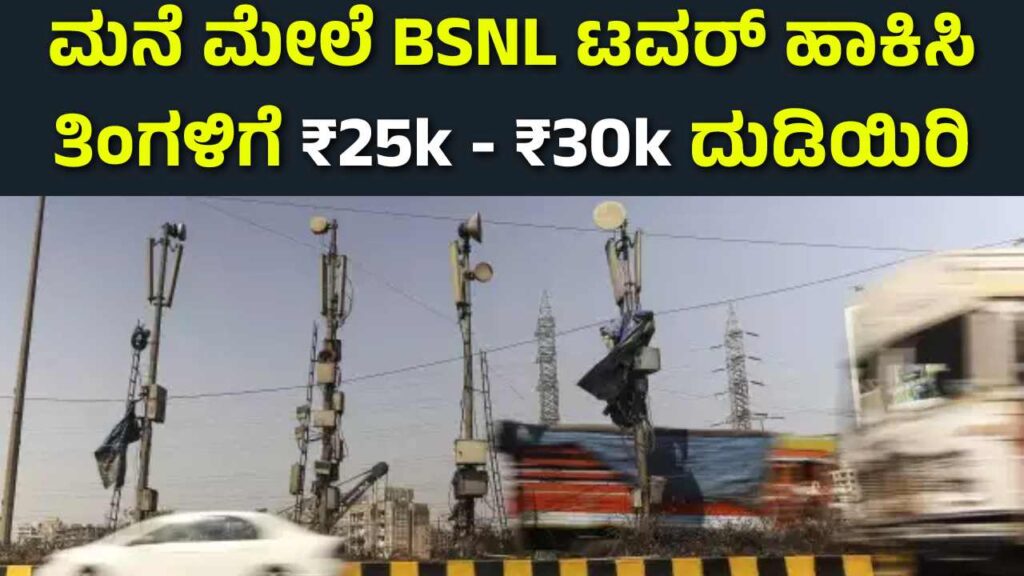Acquiring a BSNL (Bharat Sanchar Nigam Limited) tower on your land involves a systematic process that includes understanding the requirements, submitting applications, and ensuring your land meets specific criteria. Here is a comprehensive guide to help you through the process.

1. Understanding the Basics
What is BSNL?
BSNL is an Indian state-owned telecommunications company. It is one of the largest telecom operators in India, providing a range of services including mobile, broadband, and landline services.
Why BSNL Towers?
BSNL towers are essential for improving network coverage and connectivity in areas with poor signal strength. Hosting a BSNL tower on your land can bring financial benefits, including regular rental income.
2. Eligibility Criteria
Suitable Location
Your land should be in an area where BSNL needs to improve its network coverage. Typically, these areas include rural regions, urban outskirts, and places with high user density but poor signal strength.
Land Requirements
- Area Size: Typically, BSNL requires at least 500 to 1000 square feet of land for erecting a tower.
- Accessibility: The site should be easily accessible for construction and maintenance activities.
- Ownership: You must have clear ownership of the land with no legal disputes.
3. Preparation Before Application
Documentation
Prepare the following documents:
- Proof of land ownership (title deed, sale deed, etc.)
- Land map and location details
- No Objection Certificate (NOC) from local municipal authorities
- Land-use certificate, if required
- Identity proof (Aadhaar card, PAN card, etc.)
Site Inspection
Conduct a preliminary site inspection to ensure the land meets all technical and safety requirements. This may include checking for:
- Proximity to power supply
- Structural stability of the site for tower erection
- Absence of nearby tall buildings or obstructions
4. Application Process
Submitting the Application
Submit an application to BSNL expressing your interest in leasing your land for a tower. The application can typically be submitted online through the BSNL website or at the nearest BSNL office. Your application should include:
- A cover letter detailing your proposal
- All necessary documents mentioned above
Online Portal
BSNL has an online portal where interested landowners can register and submit their applications. This portal often requires you to create an account and fill out an online form with details about your land.
5. Post-Application Process
Site Evaluation
Once your application is submitted, BSNL will evaluate the site. This involves a detailed technical survey to ensure the location is suitable for tower installation. Engineers from BSNL will visit the site to assess:
- Signal strength in the area
- Terrain and topography
- Feasibility of construction
Negotiations and Agreement
If your site is approved, you will enter into negotiations with BSNL regarding the lease terms. Key points to discuss include:
- Lease Duration: Typically ranges from 10 to 15 years.
- Rental Income: Varies based on location and demand. It can range from ₹15,000 to ₹50,000 per month.
- Other Terms: Maintenance responsibilities, renewal options, and other contractual obligations.
6. Installation Process
Site Preparation
Once the agreement is signed, BSNL will start preparing the site for tower installation. This involves:
- Clearing the land if necessary
- Setting up a foundation for the tower
- Ensuring a stable power supply
Tower Erection
The actual installation of the tower involves:
- Assembling and erecting the tower structure
- Installing the necessary equipment (antennas, transceivers, etc.)
- Connecting the tower to the power supply and network grid
7. Post-Installation
Maintenance
Regular maintenance is crucial for the smooth functioning of the tower. BSNL typically handles most maintenance activities, but you should ensure:
- The site remains accessible
- Immediate reporting of any issues or damages to BSNL
Compliance and Safety
Ensure ongoing compliance with local regulations and safety standards. This includes:
- Adhering to radiation norms as specified by the Telecom Regulatory Authority of India (TRAI)
- Regular safety inspections
8. Benefits and Challenges
Financial Benefits
- Regular Income: Monthly rental income provides a steady cash flow.
- Long-term Lease: Provides financial security for the lease period.
Social and Technological Benefits
- Improved Connectivity: Enhances network coverage in the area, benefiting the community.
- Technological Advancement: Contributes to the digital infrastructure of the region.
Challenges
- Legal and Regulatory Hurdles: Navigating the legal requirements can be complex.
- Community Resistance: Some residents may oppose the installation due to health concerns or aesthetic reasons.
- Maintenance Issues: Ensuring the site remains in good condition can be challenging, especially in remote areas.
9. Frequently Asked Questions (FAQs)
How long does the entire process take?
The process can take several months from application to installation, depending on various factors such as site approval, negotiations, and construction.
Can I lease land for multiple towers?
Yes, if your land is large enough and meets the criteria for multiple installations, you can lease it to host more than one tower.
What happens if I want to sell my land during the lease period?
You can sell the land, but the lease agreement with BSNL will usually transfer to the new owner. It is important to include provisions for such scenarios in your lease agreement.
Conclusion
Leasing your land for a BSNL tower involves a structured process that starts with understanding the requirements and preparing the necessary documentation. By following the steps outlined above, you can successfully navigate the application process, negotiate favorable lease terms, and contribute to improving network connectivity in your area. While there are challenges, the financial and social benefits often outweigh them, making it a worthwhile endeavor for eligible landowners.
